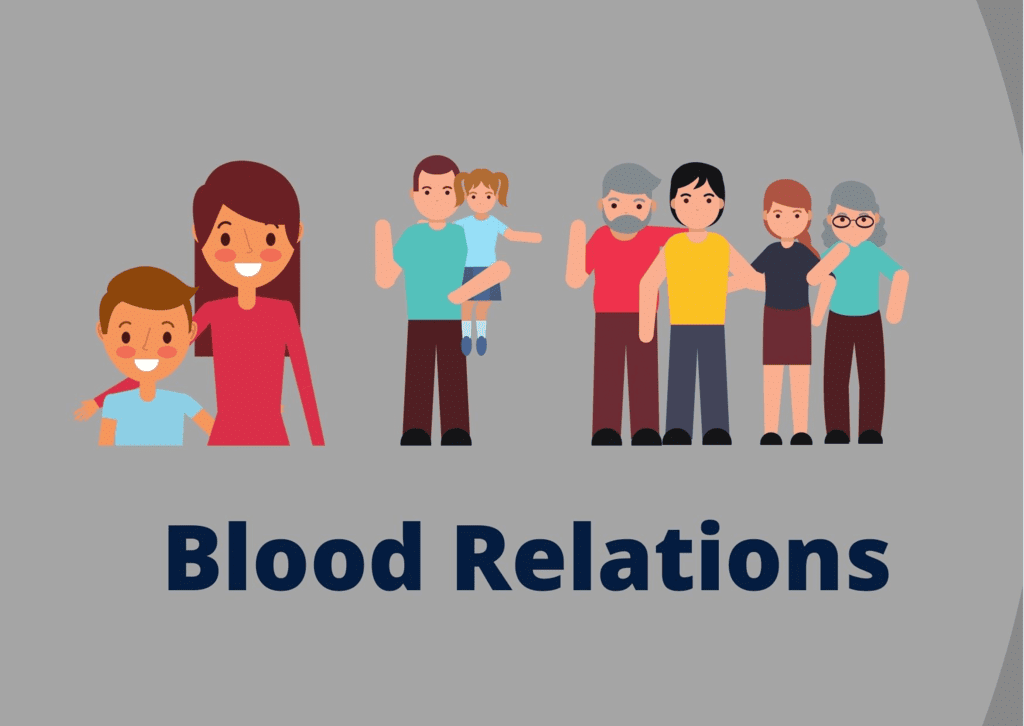Overview: Blood Relations | CSAT Preparation - UPSC PDF Download
CSAT Angle
As per the CSAT point of view and the analysis of Previous Years’ Papers it has come to the notice that in the year 2024, two questions and in the years 2022-2016 one question each was asked from this chapter.

Blood relation refers to the biological bond formed between two or more individuals through their parents. This relationship is inherent, either biologically or socially, and fosters harmony within a family, with each member sharing these ties. Questions on blood relations require analyzing information about familial connections and determining the relationship between specific members based on the given data. Typically, a chain of relationships is presented, and candidates must deduce the link between two members.
A clear understanding of various family relationships is essential for solving such problems. Standard symbols are often used to represent these relationships for clarity.

The questions of blood relation deals with the hierarchical structure of the institution of family, i.e. five generations of the family in which generally two generations are above and two generations are below.
Different relationships between the family members of different generations of a family are given below:
Example: Pointing to a lady in the photograph, Shalu said, ‘Her son’s father is the son-in-law of my mother.’ How is Shalu related to the lady?
(a) Sister
(b) Aunt
(c) Mother
(d) Cousin
Ans: (a)
Sol: Lady’s son’s father means lady’s husband who is son-in-law of Shalu’s mother means Shalu’s brother-in-law. So, the lady in the photograph is sister of Shalu. This can be shown by following family tree
Solved Example
Q1: Saroj is the mother-in-law of Vani, who is sister-in law of Deepak. Rajesh is father of Ramesh, the only brother of Deepak. How is Saroj related to Deepfake?
(a) Wife
(b) Aunt
(c) Mother-in-law
(d) Mother
Ans: (d)
Sol: The given information can be better represented with the help of following family tree
Hence, it is clear from the above family tree, that Saroj is the mother of Deepak.
Q2: L is the father of N and P. P is the son of L but N is not the son of L. How is N related to L?
(a) Daughter
(b) Son-in-law
(c) Mother
(d) Niece
Ans: (a)
Sol: Here, it is given that L is the father of N but N is not the son of L.
It can be represented as
Hence, it is clear that N is the daughter of L.
Q3: Mohan is the son of Arun’s father’s sister. Prakash is the son of Reva, who is the mother of Vikas and grandmother of Arun. Pranab is the father of Neela and the grandfather of Mohan. Reva is the wife of Pranab. How is the wife of Vikas related to Neela?
(a) Sister
(b) Sister-in-law
(c) Niece
(d) None of these
Ans: (b)
Sol: Using given information, following family tree can be drawn as below:
From the above chart, it is clear that Vikas is the brother of Neela. Therefore, wife of Vikas will be sister-in-law of Neela.
Q4: Showing a photograph to a friend, Ravi says, ‘She is the granddaughter of the elder brother of my father’. How is this girl related to Ravi?
(a) Niece
(b) Sister
(c) Aunt
(d) Sister-in-law
Ans: (a)
Sol: Given information can be represented as below:
From the above family tree, it is clear that, the girl is niece of Ravi.
|
205 videos|258 docs|136 tests
|
FAQs on Overview: Blood Relations - CSAT Preparation - UPSC
| 1. What is the importance of Blood Relations in UPSC exams? |  |
| 2. How can I improve my Blood Relations problem-solving skills for UPSC? |  |
| 3. What types of questions are commonly asked in Blood Relations segments of UPSC? |  |
| 4. Are there any specific strategies to solve Blood Relations questions quickly in UPSC? |  |
| 5. Can you provide an example of a Blood Relations question for UPSC preparation? |  |





















